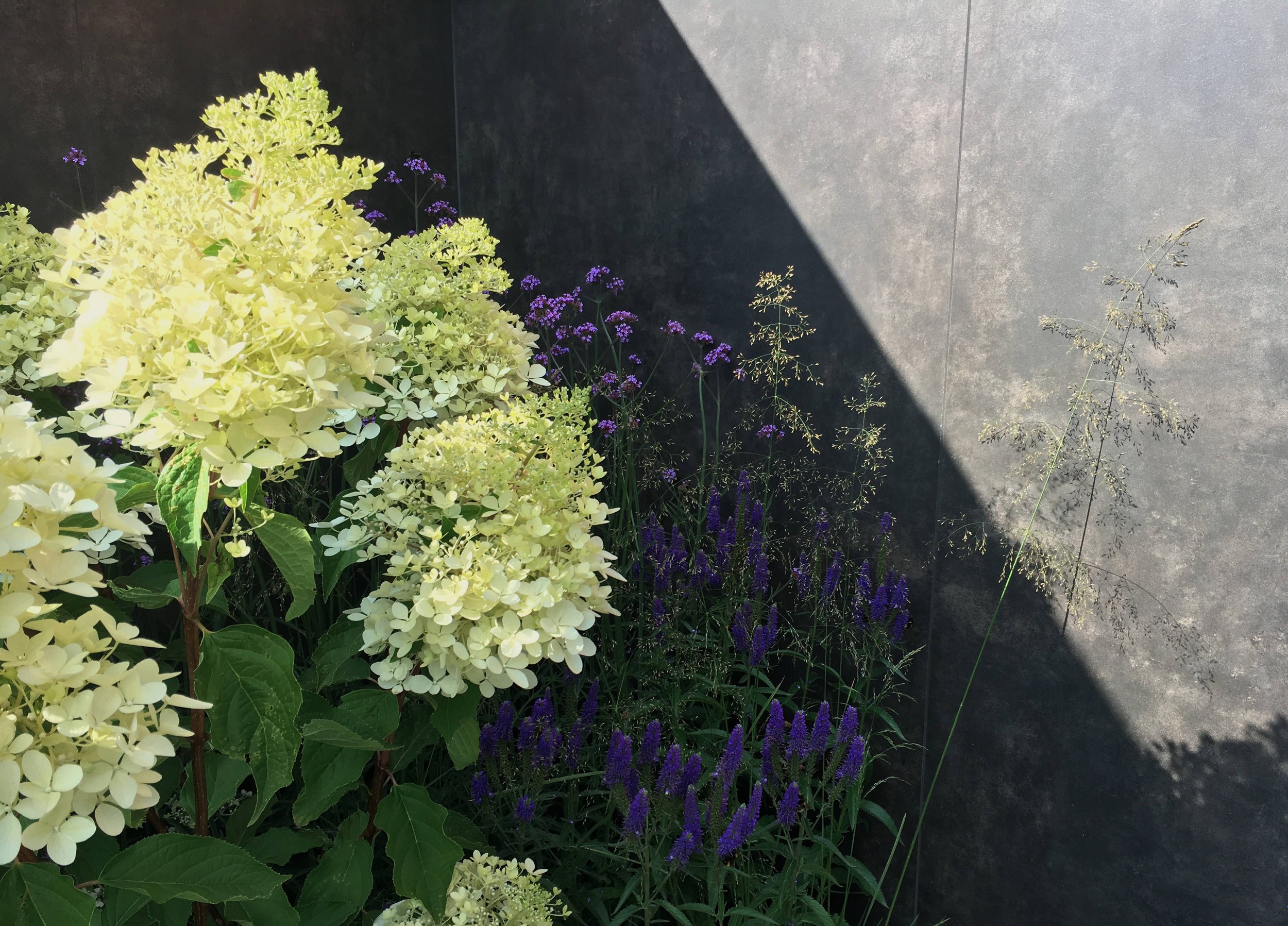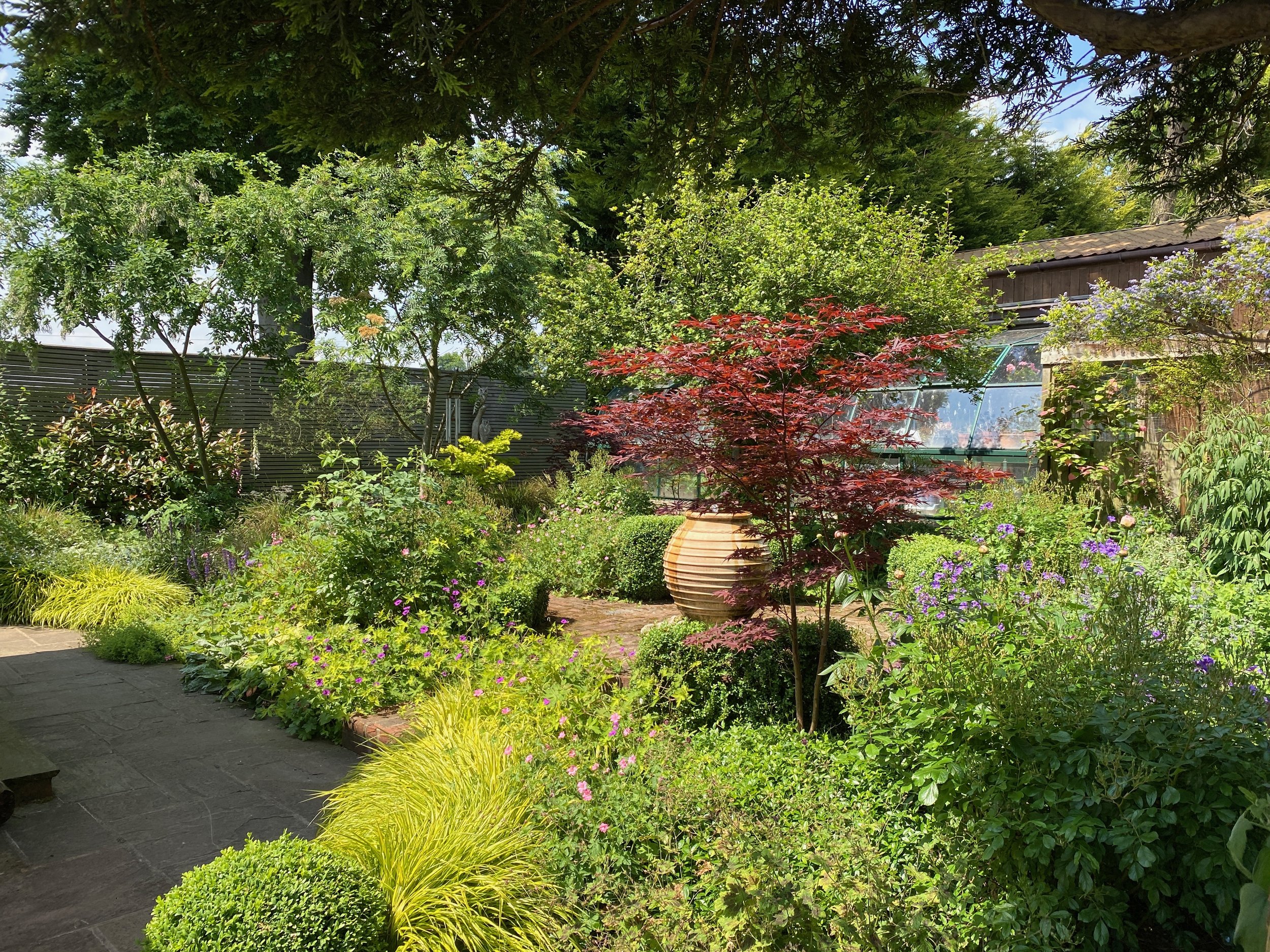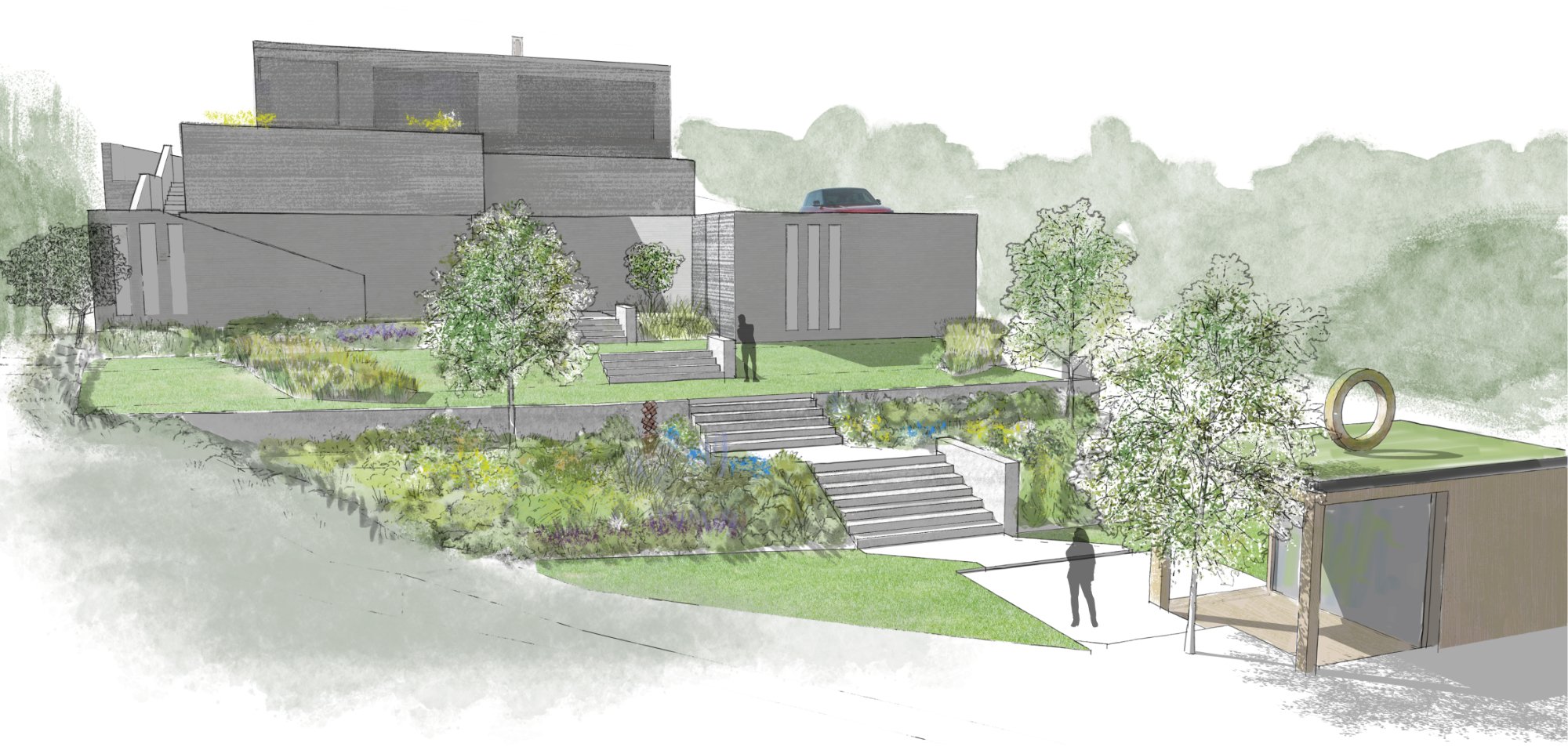
Garden design in Yorkshire
Haddon Studio: Yorkshire garden designers
We are a a team of award-winning garden and landscape designers based in North Yorkshire - and creating biodiverse gardens throughout East Yorkshire, West Yorkshire, and the North of England, as well as across the UK and Internationally.
The basis of all of the gardens which we design and implement are gardens that look, feel, and function as you want them to whilst also making space for Yorkshire wildlife to survive and thrive.
We will create your perfect garden - for you to use as you wish. We create gardens for those who seek relaxation and contemplation, those who want a place to actively garden or just potter around, or for those who want space to socialise and entertain.
We are landscape and garden design experts in:
assessing your garden’s opportunities and limitations
visualising your garden’s potential in 3D
turning possibilities into 2D plans and plans into reality
designing with consideration for the development of plants over time, changing and growing through the seasons and years
With our years of design expertise and experience our creative garden and landscape designs will inspire you to connect again with your Yorkshire garden.

We create contemporary gardens, where people and wildlife co-exist
Your Yorkshire Garden Designers
Matthew, Creative Director at Haddon Studio, has spent the last twenty years living in York, North Yorkshire, and East Yorkshire, and has developed years of experience when it comes to what plants will work well in a Yorkshire garden. This planting expertise is combined with Haddon Studio’s technical and creative flair in the Masterplanning and technical detailing required to create a truly stunning garden. Matthew is one of just over 200 garden designers in the UK to be a Registered Member of the Society of Garden Designers (having passed their exacting accreditation process) and Haddon Studio is a Society of Garden Designers Registered Design Practice.
With unparalleled horticultural and design knowledge and experience, combined with our industry accreditations, we will help you to create a truly amazing outdoor space wherever you may be in Yorkshire.
Examples of our Yorkshire garden designs
Examples of our Yorkshire gardens can be found on our Projects pages - for example:
The gardens of Yorkshire
The gardens of Yorkshire are many and varied, as Yorkshire is the country’s largest county (alone North Yorkshire is the largest county but we are including all four Ridings here as well). From the urban centres of South and West Yorkshire, to the long history of York itself, to the rolling Moors, Dales, and coastlines of North Yorkshire, to the Wolds of East Yorkshire, almost every type of garden exists somewhere in Yorkshire. Haddon Studio has many years of experience creating gardens, from garden design in Beverley to Whitby, from garden design in York to Skipton, and from garden design in Harrogate to Leeds) which means we are uniquely positioned to understand the needs and wants of our design clients wherever in Yorkshire you may be based.
There are stunning gardens across Yorkshire - from the Museum Gardens in York city centre, the contemporary gardens of Scampston Hall or the Barbara Hepworth Gallery in Wakefield, the showcase gardens at RHS Harlow Carr, and too many others to name - alongside some amazing private residential gardens (some open at different times through each year under the National Open Gardens Scheme).
The wide and diverse landscape of North Yorkshire
The landscape of North Yorkshire ranges from valleys to coast, from historic towns to networks of canals, and then to the wilderness of the nationally designated parks of the Yorkshire Moors and the Yorkshire Dales. A host of beautiful market towns criss-cross the county from Richmond, Malton, Knaresborough, and Northallerton to the cathedral city of Ripon and the historic seaside resort of Scarborough. We discuss below some of the habitats that sit alongside the scenic towns and villages and when designing gardens the context of the surrounding landscape is especially important. Also important is the historical context, and in North Yorkshire this can range from places such as Fountains Abbey, which is designated a World Heritage site, artefacts such as Viking (or more correctly Insular) sculpture, which are especially rich along the Vale of Pickering, and also Roman remains which are found in York, which was founded in 71 AD (as Eboracum). When setting any garden or landscape in its proper context the history of the area, and understanding this, is also crucial in making it feel ‘of the place’ - not necessarily copying these elements but using them as a starting point for inspiration.
The East Riding and the low flat lands
The landscape of East Yorkshire has a different feel to that of North Yorkshire. Predominantly flat - making it excellent arable land - it is marked by the Vale of York to the west, then the gently rolling Yorkshire Wolds, then the dramatic coastline of chalk cliffs at Bempton and the ornithologically rich sands at Spurn Point, at the mouth of the River Humber. Again there are market towns, such as Beverley and Driffield, alongside areas of dramatic coastline from the cliffs of Flamborough Head to an eroding coastline further south. Inspiration in the East Riding can be drawn from a rich history from neolithic barrows near to Driffield to the deserted medieval village of Wharram Percy, and then from the landscapes and historic houses accessible today. Matthew, our Director, is a trained historian, and so as noted above we will seek to overlay a historical context where it is appropriate to a garden design.
Unique conditions in Yorkshire gardens
With varying climate, rainfall and temperature depending upon where your garden is it is essential to ensure that each garden’s unique conditions are fully understood before the design process starts as all of these factors will affect what can be, and what should be, planted there.
Similarly understanding a site’s soil structure and acidity is essential - especially where this may change across different areas of the same garden. Yorkshire has a mix of acidic, neutral, and alkaline soil conditions depending upon where a garden in located - from peat soils on the highest ground, to acidic soils across much of its area, to the alkaline chalky soils of the Vale of Pickering, the Yorkshire Wolds, ending with chalk cliffs across some of Yorkshire’s coast. For this reason we always test he soil before starting work on the design of any new garden - as gardens close by can have very different conditions. For example, Rhododendrons, Azaleas, and Camelias may look amazing a mile away but if you try to grow them in a soil that is not acidic they will struggle and eventually die. It is often the case that our clients believe they are not green-fingered when in fact they’ve simply tried to grow the wrong plant in the wrong place.
Yorkshire garden habitats and their influences
With regards to the habitats surrounding your garden, village or town, much of Yorkshire, like much of the UK, is dominated by arable land. However there are also some fascinating habitat fragments (and larger areas) that you may consider offering connectivity through your garden from and to. On high ground there may be Heath, Grasslands and Pasture, and on lowland there may be Grasslands and a diversity of woodlands (although Mixed Oak and Ash woodland predominates), as well as Mixed Scrub. Also of interest, for the diversity they host, are ponds and streams as well as - linking back to man-made habitats - brownfield sites and traditional orchards. Each habitat will be unique to the geology and geography of where you live and so rather than seeking to recreate habitats that are not part of your local area we advise where possible to create pockets of habitat that allow a linkage of plant and animal species, creating a garden that sits uniquely and naturally in its location. Each habitat is unique and a sensitive approach to developing your garden may help to extend its interest (whether country gardens using hedgerows to extend diversity from arable land or from a unique woodland habitat, for example, or town gardens with their matrix of neighbouring parkland, gardens, and brownfield sites).
Selecting the best hardy planting and shrubs for your Yorkshire garden
Yorkshire’s climate varies as it stretches across such a wide area - from the sheltered Vale of York, the maritime climate of the North Yorkshire and East Yorkshire coastal towns, to the higher altitudes of the North Yorkshire Moors and Nidderdale. Most of Yorkshire, like York itself, is classed (in terms of plant hardiness) as being an H5 area (which is based on the RHS’s Hardiness Ratings for plants - or somewhere around an 8a area using the older USDA rating). This may sound less than straight forward if you’re not a professional gardener but knowing how hardy a plant needs to be to survive outside allows you to select plants that should survive the winter in your garden.
For many Yorkshire gardens you should therefore select hardy plants (trees, shrubs, and perennials) that will survive winter temperatures down to -15 degrees centigrade - or to -20 degrees centigrade at higher altitudes. If you are using Hardiness Ratings to select plants you should choose plants with a rating H6 or H7 to ensure their survival anywhere in Yorkshire, and can include H5 plants in lower altitudes…(H4 plants may survive a milder winter in your garden but plants with a rating of H3 or less will need a greenhouse to survive).










